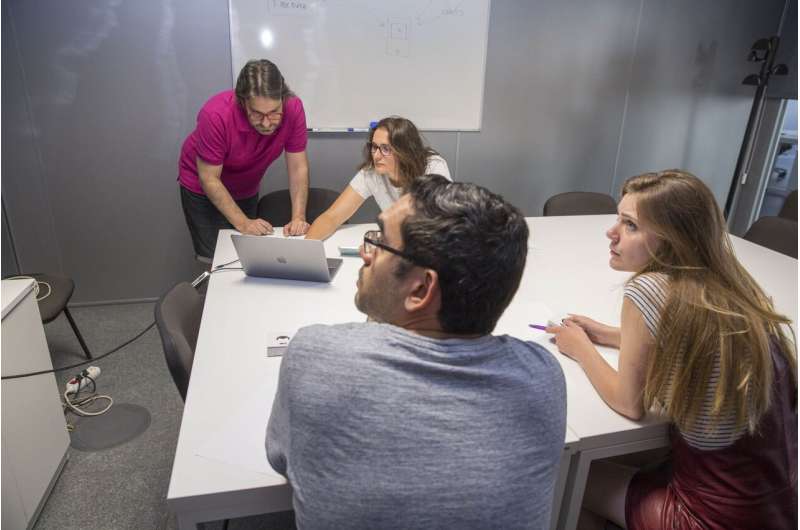Credit: Asociación RUVID
A research team from the Geospatial Technologies Research Group of the Universitat Jaume I has designed a virtual assistant based on advanced geolocation for guided tours in museums. AVIMUS is a platform for the management of museum spaces that includes an ecosystem of applications with a high degree of interoperability at different user levels. It has been developed with the most modern technologies available, including a positioning system based on signals emitted by Wi-Fi devices (antennas, repeaters and routers), BLE beacons and GPS signal. This positioning system aims to locate the user of the application with respect to the elements shown in the museum and is essential for the guided tour.
Depending on the environment, the platform automatically selects—from among all the available ones—the positioning technologies on which to rely. In addition, it has a series of functionalities that inform managers of possible incidents in the interior positioning system, suggest the places where to install the beacons in those areas where it is necessary to improve the accuracy of location and advise changes in their configuration.
On the one hand, AVIMUS provides a control panel to museums that allows those in charge to manage the exhibitions to define the points of interest, include additional multimedia information in multiple languages, provide the basic design elements (corporate image) that allow the generation of applications for mobile devices and offer advanced statistics on how visitors using the mobile application interact with the exhibition elements.
On the other hand, it provides the architecture and structure of the mobile application that feeds on the content introduced by the museum managers. Thus, the museum decides at all times what type of information should be displayed, be it simply a digital copy of the exhibition element (for example, a high-resolution image), or additional and complementary information that is not available in the exhibition (such as videos related to the element shown). This application provides users with a kind of interactive guide to the museum and its exhibitions, which also has the functionality of suggesting a personalised route from the context and user profile.
Finally, the location algorithm runs on the device itself, so the information required for estimating the position does not need an Internet connection, nor is it recorded on any server external to the device. Although the time of visit and permanence in each element of the exhibition can be recorded for later analysis by the museum managers (for example, for detecting those elements of the exhibition that are visited less frequently than expected), no data is collected that could compromise the security and privacy of the user. In other words, no information is sent with which the position of users can be estimated outside the environment in which the application is used, i.e. the museum itself.
The AVIMUS platform offers a generic, modular and adaptable solution instead of an ad hoc solution for each exhibition site. It can be interesting to museums, open-air cultural spaces, universities, amusement parks, in the cultural promotion of cities or counties, as well as in other spaces, such as commercial ones. Among its advantages, it does not depend on a single positioning technology and can operate in indoor, outdoor and mixed environments, without the need for an Internet connection; it is autonomous and can be configured by the client; and it can be self-managed by the staff themselves.
Provided by Asociacion RUVID





















